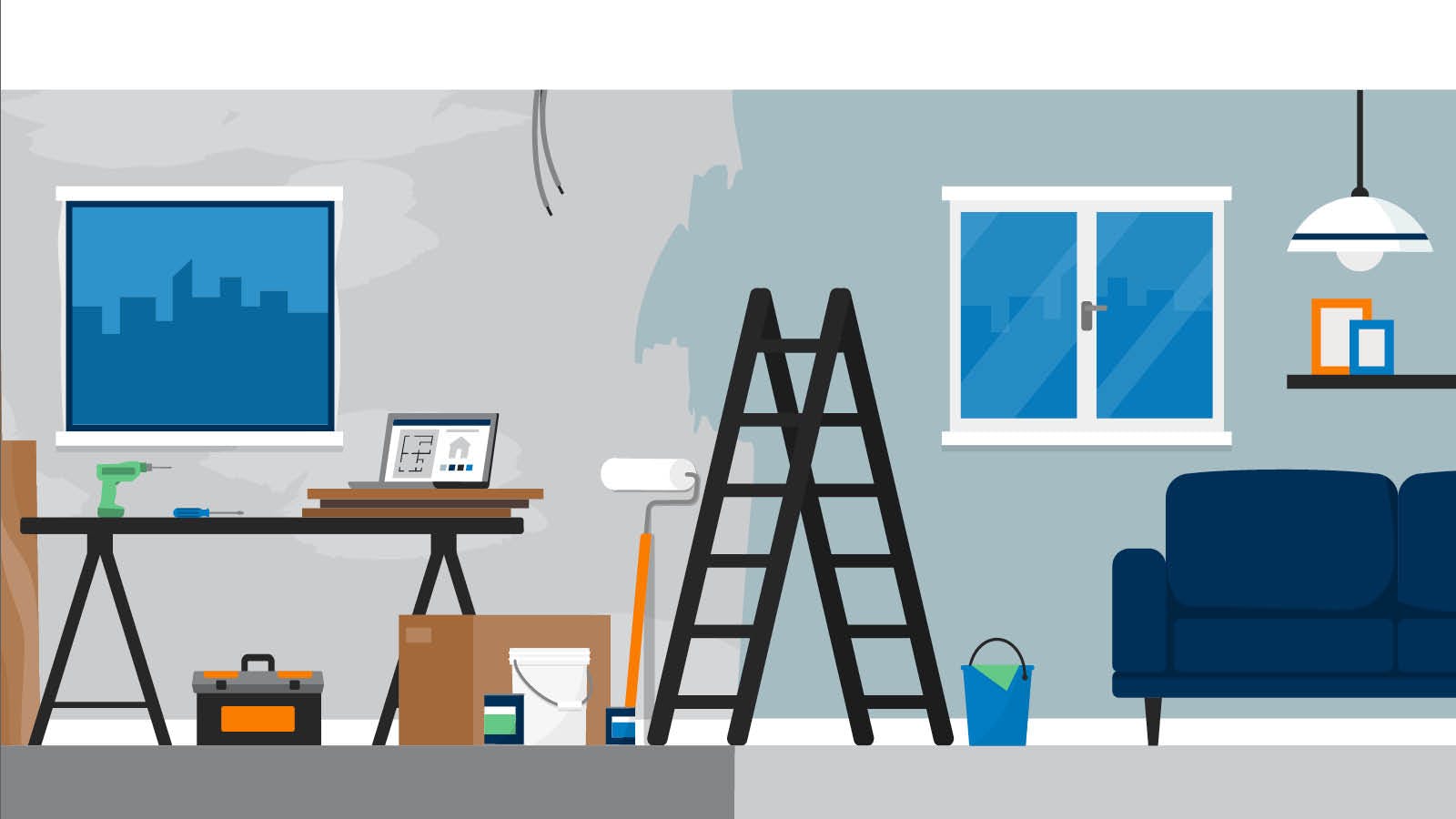

There aren’t many projects that are as crazy-making as a home renovation. The pushed deadlines… the construction noise… the dust and debris…
But sometimes it’s a necessary evil! 30% of owners renovate to upgrade worn-out surfaces, finishes, and materials. Another 20% renovate to add features and improve livability. 16% just want a change, plain and simple. Whatever your motivation, some home improvements simply need to be made.
With a little prep and some realistic expectations, though, you can cut down on stress and disruption. And you might even gain some home equity along the way — Calculate your after-repair value or ARV to see what your home may be worth post-renovation!
Today, we’re revisiting our complete survival guide for home renovations, whether you’re filling a swimming pool or adding square footage. Read on for some of our top tips.
Don’t be a hero. When your kitchen is torn down to the studs, you’ll want some simple comforts. Think: access to your own bathroom.
Consider renovating rooms, or portions of the house, one at a time. With this approach, you can tackle concerns in order of importance. For example, maybe you want to renovate the backyard. But maybe you need to renovate the master bath.
This is especially important if there’s a structural or safety issue at play. That killer paint job or beautiful backsplash can wait. Large-scale repairs usually can’t.
Large-scale home repairs: Projects that go beyond typical home maintenance. They often require substantial work and investment. Foundational repairs, structural repairs, etc.
You might also want to spread costs out over time. Instead of paying one lump sum, you can make small contributions as you go, all while saving up for future costs. Or, consider a cash-out refinance that would structure repayment of the investment over the life of your loan.
What happens when your family is suddenly sharing one bathroom instead of two? Who gets to shower and when? How do you manage everyone preparing for work/school?
Enter: The master schedule.
Your schedule should cover all important dates and time blocks, including:
Of course, the schedule can (and will) change over time. But it provides at least a little bit of order for everyone involved.
This one’s important! Home renovations can get pricy. Fast. Materials, labor, delays, and more can all add up.
Work through each step, one by one, so you don’t blow your budget.

No new kitchen is worth injury or illness! During a home renovation, you can’t overlook the safety of you and your family.
A few potential hazards might include:
If you have kids or pets, you’ll need to be even more eagle-eyed.
Safety will look different for every project, but a few of our top suggestions include:
Great teammates make all the difference. And unless you’re a construction worker yourself or plan to DIY, odds are you’ll be leaning on your contractor a lot.
A few things you’ll find in a great contractor include:
As you navigate the home renovation process, keep in mind that you’re allowed to take a break.
If something is not entirely necessary or is out of budget, it might be able to wait. For example, wainscotting, repainting, or other nice-to-haves. These features aren’t worth blowing the budget or the schedule. You can always circle back to finish that basement or perfect that paint shade.
Keep in mind that buyer’s remorse is a real thing! Don’t rush into any decisions or projects unless you feel completely confident.
We’re not saying things are sure to go off without a hitch. Or even that there won’t be moments of stress. But a little preparation sure goes a long way.
If all else fails, just close your eyes, and go to your happy place. Maybe the finally finished kitchen?